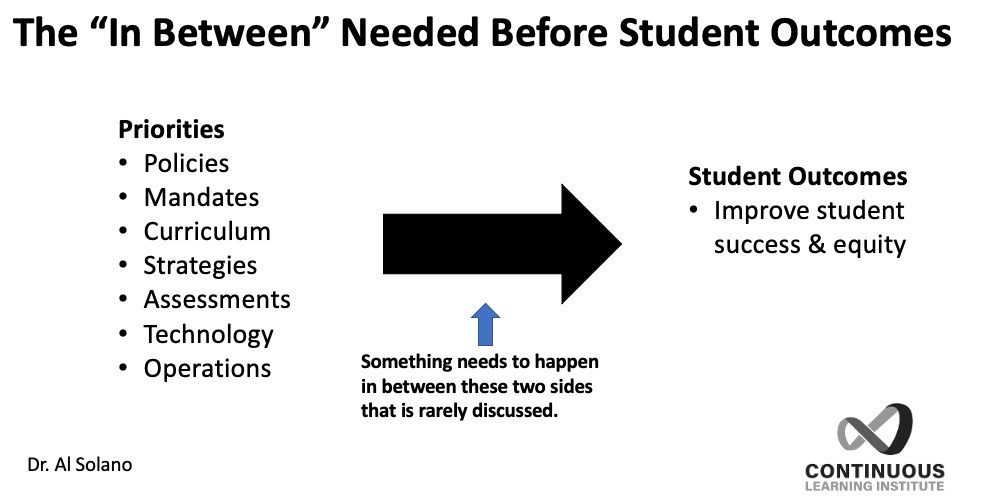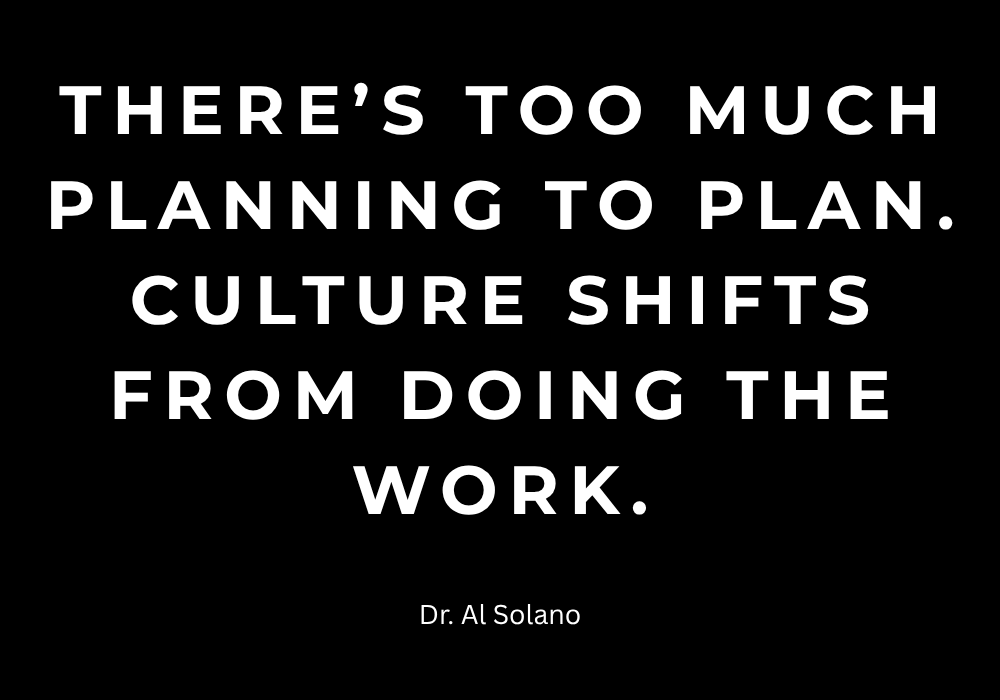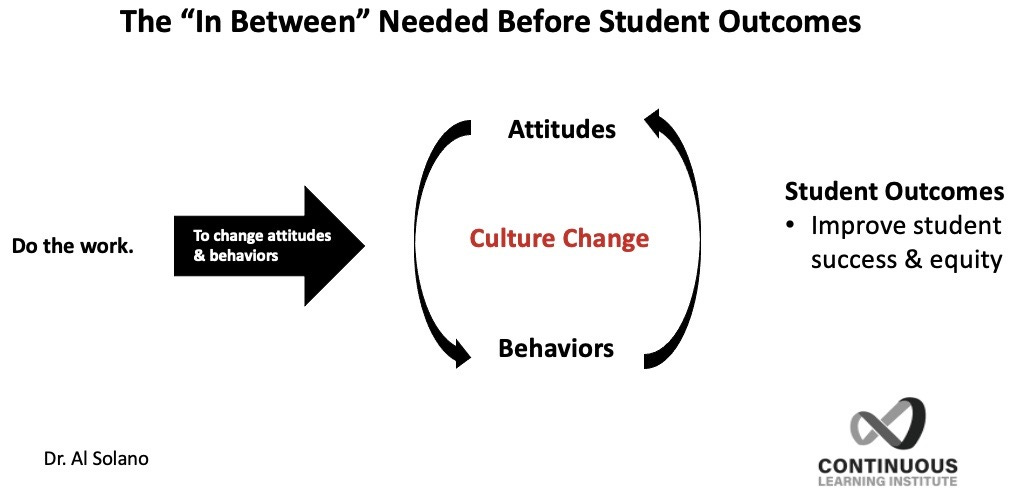The “In Between” | 005 | Culture & Implementation
Attitudes and behaviors change through productive work.
Ask almost anyone in higher ed what they’re working on, and they’ll name a priority: student onboarding, personnel professional development, equity policies, grants, degree completion initiatives, etc.
Ask what they’ve changed—attitudes, behaviors, daily practices—and the room goes quiet.
Because somewhere between the priorities and the desired outcomes, most institutions are not intentional about the hardest (and most important) part:
The in-between.
What’s the In-Between?
It’s not a new framework.
It’s not a committee.
It’s not the glossy summary at the end of a retreat.
It’s the real changes in attitudes and behaviors that sits between what we say we value and the outcomes they’re supposed to produce.1
It’s what student success and equity outcomes rely on.
Let’s Be Honest About the Barriers
Educators want to improve student outcomes.
But institutions often stall because they’re trapped in one or more of these:
Analysis paralysis: Endless meetings with no decisions and unproductive data talk
Gatekeeping: The same loud few derail or delay progress
Blame shifting: “Students aren’t ready,” “Admin doesn’t get it,” “The union ensures change never happens,” etc
Ineffective leadership: No one (faculty are leaders too) is clearly guiding the work forward and addressing unproductive rivalries
And underneath all of that is an uncomfortable truth:
We don’t actually know how many of our colleagues are willing to change.
Some talk a good game and never act.
Some are indifferent.
Some are anti-equity, full stop.
So what do we do when the landscape is mixed?
We Create the Conditions Where Growth Happens
Consider this notion.
Change in attitudes follows or accompanies gradual change in behavior. For example, the faculty member who has had low expectations of students can adopt higher expectations if the faculty learns how to successfully teach toward that expectation, then sees student progress.2
For example, this is why inquiry & action teams are effective at producing positive outcomes.
Because they do the work. They turn talk and strategy into action.
What Doing the Work Looks Like
Effective institutions don’t stop at planning. They roll up sleeves. They face resistance. They make progress anyway.
Here’s what makes that possible:
Centering kindness: Not kumbaya, actual kindness that builds trust
Skilled leads: High-quality facilitators who know how to move a workgroup, task force, committee, etc.
Support from the top: Presidents and the executive team, faculty leadership, and classified leadership backing the work
Time awareness: They understand the 3-month rule (or 2 months, really)—and make every meeting count
And they follow a process, whether it be Plan-Do-Check-Act or whatever.
Too many campuses spend years in the first stage, Plan, afraid to test anything real.
A quick example: Some colleges took 3–5 years just to name their meta-majors.3 And when they did?
They buried them five clicks deep on the website—never integrated, never used to improve the student experience. That’s not implementation. That’s procrastination with branding.
Stop Waiting. Start Building.
If we want to see changes in student success and equity, we have to change how we work:
Design teams that act—not just talk
Let go of perfection and move to progress
Don’t let the loudest institutional conservative voices win
Keep the mission front and center
Tell the truth, even when it’s inconvenient
Equity work without implementation is a wish.
Student success without attitude and behavior change is a myth.
And cultural change without doing the work? Doesn’t exist.
Do the work.
Onward…
Dr. Al Solano
Founder, Continuous Learning Institute | About
Host, Student Success Podcast
A meaningful test of success is how helpful we are in contributing to our fellow human being’s happiness.
More on the "In-Between," plus a video. https://www.continuous-learning-institute.com/blog/the-in-between-what-s-needed-to-improve-student-outcomes
Dr. Ron Gallimore, UCLA Professor Emeritus (various conference presentations). Author, Rousing Minds to Life (1990) and You Haven't Taught Until They Have Learned (2010).
Meta-majors are collections of academic majors that have related courses and careers. The intent of selecting a meta-major (as opposed to choosing from a list of 100+ majors) is to help students choose an academic area based on their interests. Therefore, a student may initially choose to be in a STEM meta-major instead of specifically choosing chemistry, biology, or physics. Meta-majors are also leveraged to build community.




